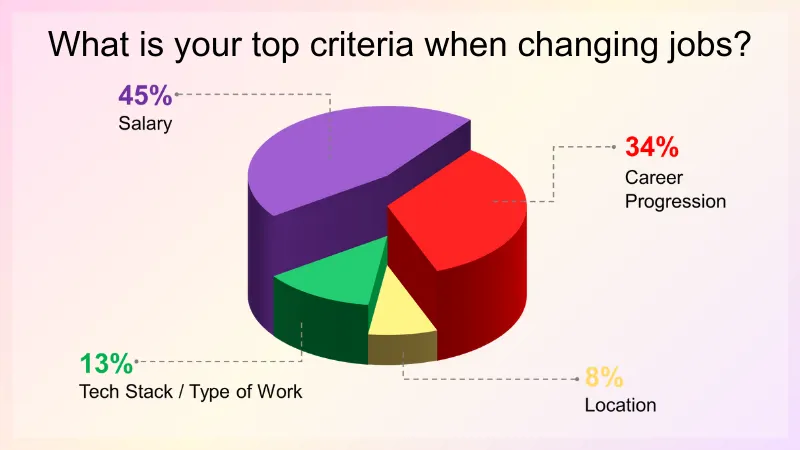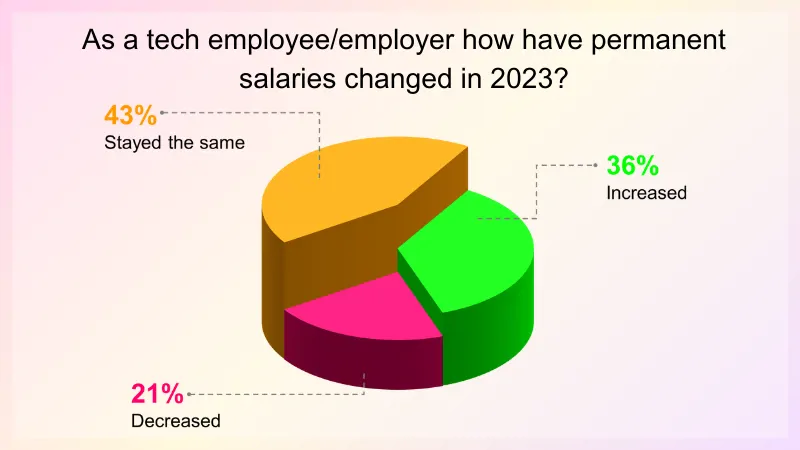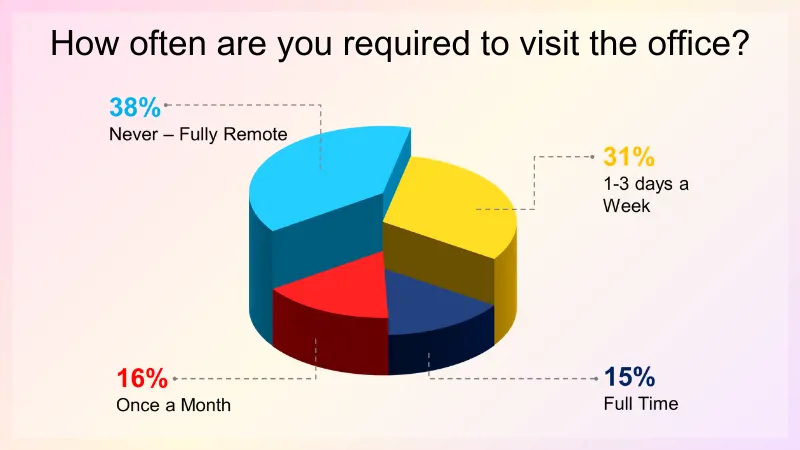Spectrum IT Insights
Trends, data, and developments in IT and Tech Recruitment
Spectrum IT's Review of 2023
As we begin the journey into 2024, here at Spectrum IT Recruitment we’ve been reflecting on what 2023 has meant for the IT workforce. Working with a broad range of both candidates and employers across the sector gives us unique insight into the latest hiring trends. We’ve collated our findings into this review of the year, covering both permanent and contract hires.
Overview of Demand
During 2023, demand for software and technology staff was down compared to 2022. This was particularly noticeable in the contract division, with companies opting for permanent staff over utilising specialist contractors. However, there are encouraging signs of growth; Quarter 4 has seen demand increase once again, with several businesses reverting to building out software teams with multiple hires of between 5 and 15 staff. These are typically a blend of permanent and contract hires.
The main reasons why companies were making permanent hires this year were:
Strategic hires to expand teams / develop new projects
Replacement due to natural staff movement
Bringing new technical skills to the teams
Across all hires in the last 12 months, the top four most in-demand jobs this year have been:
Software Developers
Testers
DevOps Engineers
Project Managers
Job Changes and Staff Retention
This year we’ve seen more redundancies in the technology and IT sector than we have done for several years. However, the majority of affected candidates have been able to secure new employment quickly. We’ve also noted that after an offer is made, candidates are typically starting in positions much quicker, or are negotiating shorter notice periods with their current employer.
Staff retention is always a key concern for companies keen to keep highly skilled workers; it’s an area that we are often asked to advise on. A recent survey of more than 700 software and technology candidates found that 79% consider salary or career progression as principal factors when looking for new job opportunities. Therefore, it’s important for successful companies to offer both of these, increasing retention of good, hard-to-replace employees – a major asset to any software business.

Over the last year, we’ve recommended anonymous employee engagement surveys as a way to find out exactly what staff are looking for in their current position, and to give them a chance to provide feedback on what could be improved. Staff members who feel listened to are typically more engaged and happier in their roles. When working with potential candidates, the types of questions we’re asked about hiring companies include parking arrangements, hybrid/flexible working opportunities and company culture, so these make good areas to cover in any employee engagement surveys you wish to carry out.
Salaries and Day Rates
Back in 2022 we saw a significant increase in salaries and day rates, due to a lack of candidates in the market, as well as a high demand for talent. However, in 2023, both salaries and day rates have stabilised.
Throughout 2022, we saw candidates primarily opting to move positions to gain a salary increase, typically of between 10%-22% of base salary. In a recent market survey by Spectrum IT Recruitment 36% of IT candidates indicated that salaries had continued to rise in 2023 with 43% saying they had stabilised. A shock result was that 21% of the market had seen salaries decrease. We expect this was a result of candidates being made redundant and seeking new employment. New employers potentially trying to have salary caps or market bandings which meant people changing positions on higher salaries had to take a reduction to find employment. Its very rare to see a candidate moving for less money in the current market without a significant reason. Reasons may include reducing responsibilities within a position or moving from a London based to a regional job.

Work Location Trends
Ever since Covid, primary work locations have shifted. We discussed this in a previous blog, exploring the remote working landscape in 2022/2023. During the course of 2023, however, some companies have begun to request that employees return to the office more frequently in comparison to 2022. In our recent LinkedIn survey, which had around 1000 responses, 38% of workers are currently working fully remote, and 46% of employees are required to attend the office at least 1-3 times per week. This requirement to return to the office has seen some candidates seeking new employment closer to home or moving to opportunities that offer fully remote working.

Hiring and Recruitment Trends
At the moment, the time it takes to make a permanent hire is typically 2-4 weeks (not including any applicable notice periods). In 2022, a hire could take 4-8 days once the right candidate for the position was identified. However, good candidates can still move very quickly in the current climate, so we always encourage employers to act fast to secure the best candidate for them. For example, we recently placed a Senior Software Developer in just three days from initial instruction!
In 2023 we’ve seen an increase in requests for face-to-face meetings at the second interview stage. Almost all our clients conduct a virtual screening as a first stage (either on Teams or similar, or via a phone call), as these can generally be booked in more quickly and help to keep candidates engaged. Again, we recommend booking in interviews as soon as possible, as good candidates are still receiving multiple job offers.
When a technical test is required as part of an interview process, we would always encourage this to be conducted at the second stage once the candidate is engaged with the business. Sending a test to a potential employee without an initial interview can put candidates off.
The Contracting Landscape
During 2023, the contractor market has reflected the broader trends in the tech industry. Market conditions in the UK have seen changes due to various factors such as regulatory updates, economic shifts, technological advancements and global events. Our experienced contracts team has monitored these trends over the course of the year to deliver these key insights.
For a start, remote working has become increasingly normal, allowing contractors to work for companies regardless of their location. This flexibility expanded opportunities for both contractors and clients, enabling access to a broader talent pool and accommodating various work preferences. As the year has progressed, we have seen an increase in clients preferring a more hybrid model, dependent on IR35 status and project needs.
With the ever-changing regulatory requirements and the economical shifts, this has also affected contractor rates. Some contractors have experienced rate reductions, due to companies adopting a more cautious approach in engaging with contractors. Negotiations involving rates, contract terms and employment status are occasionally more complex and crucial. As such, we’ve seen more companies opting to work with agencies on contractor recruitment, allowing us to manage compliance, contracts and engagement processes effectively.
Despite this, many companies do continue to rely on contractors for project work, especially for those projects requiring specialised skills. This enables companies to have a flexible workforce that can be tailored to specific project requirements, without the commitment associated with permanent hires.
Over the last year, highly sought-after technical skills include Cloud (AWS, Azure, GCP), Cybersecurity, Data Science, Artificial Intelligence, DevOps and Software Development (C#, .NET, JavaScript, Python, Java, etc). With persisting talent shortages in some highly skilled areas, particularly in niche or emerging fields, these contractors have found themselves in a competitive market, enabling them to command higher rates and more favourable terms.
If you need advice on how to apply these insights into your situation, whether you’re a candidate seeking a new opportunity, or a company recruiting your next hire, contact our team of IT recruitment experts now.
Hiring or stepping up your IT career?
Our IT recruitment agents have years of experience helping companies find the right talent. We focus on matching the right candidates with the perfect opportunities, making sure it's a great fit for everyone.

